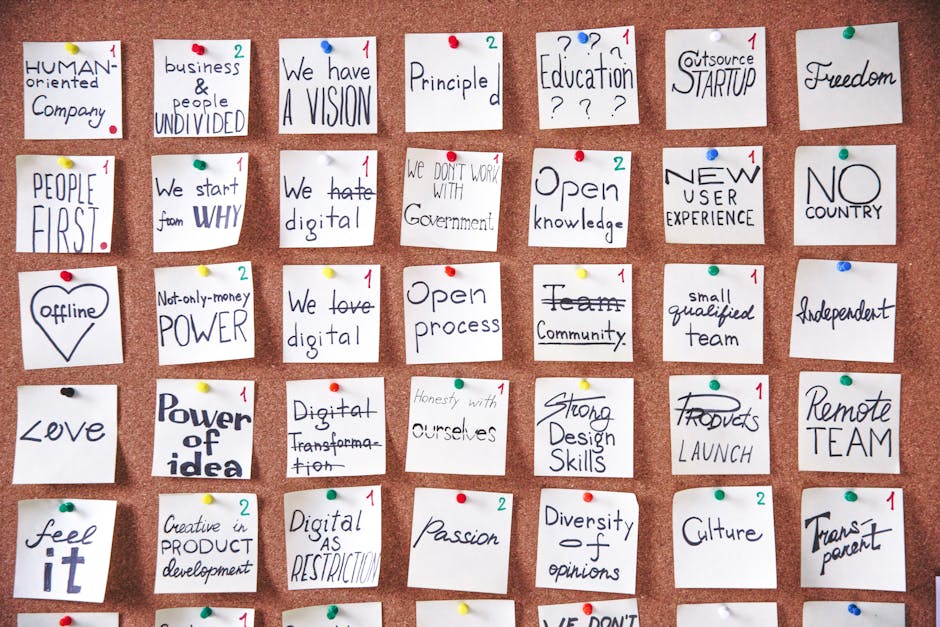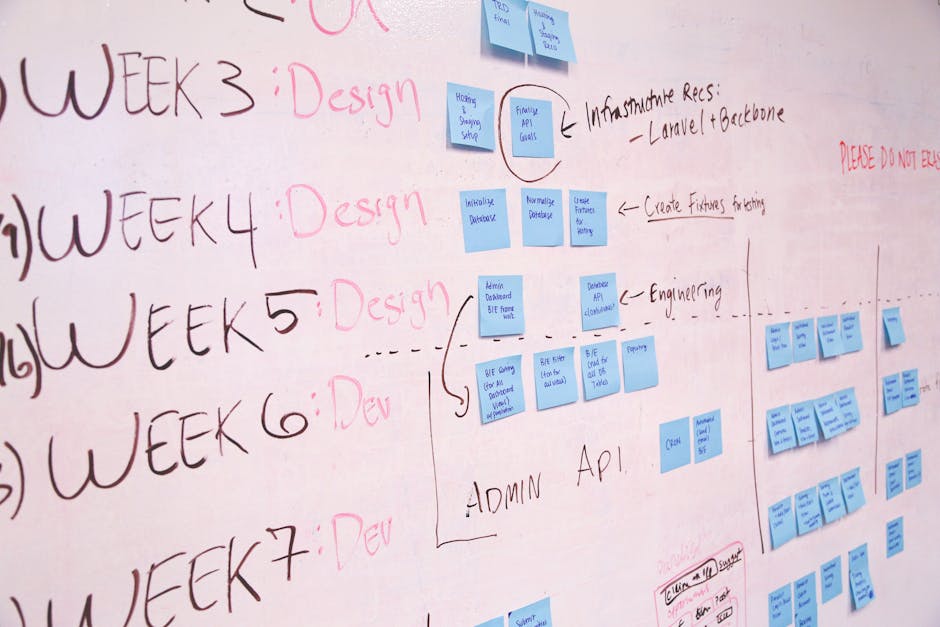Birmingham’s Guide To MVP Development: A Step By Step Process
Welcome to Birmingham’s Guide to MVP Development: A Step by Step Process.
Just like the vibrant city of Birmingham, this guide is designed to empower you with the knowledge and tools needed to create a Minimum Viable Product (MVP) that will make waves in the market.
Think of this guide as your compass, leading you through a journey of innovation and success.
We’ll take you by the hand and show you how to:
- Define your goals and vision
- Identify your target market
- Conduct thorough market research
- Design an impeccable MVP
- Test it rigorously
- Iterate based on feedback
- Finally, launch and scale it for maximum impact.
No matter if you’re an aspiring entrepreneur or an established business looking to revamp your product development strategy, our step-by-step process will ensure that you navigate every stage with confidence and precision.
So let’s dive in together and unlock the secrets behind creating a winning MVP.
Birmingham awaits your entrepreneurial spirit!
Key Takeaways
- The MVP development process involves defining goals and vision, conducting market research, designing an MVP, and testing and iterating based on feedback.
- The process empowers entrepreneurs and businesses by providing confidence and precision in creating a winning MVP.
- Steps for defining goals and creating a roadmap include involving key stakeholders, identifying the target market, conducting thorough research and analysis, and understanding customer needs and pain points.
- Steps for continuous improvement in testing and iterating involve prioritising issues based on user experience impact, conducting user tests with diverse participants, collecting data through surveys and interviews, and implementing improvements based on testing results.
Defining Your Goals and Vision

Get ready to dive deep into your aspirations and imagine the incredible possibilities for your product’s success. The first step in developing an MVP is defining your goals and vision. Setting objectives is crucial as it provides a clear direction for your product development journey. Take some time to think about what you want to achieve with your MVP.
Are you looking to solve a specific problem or meet a particular need? By clearly identifying your goals, you can ensure that every decision you make alines with them.
Creating a roadmap is the next important task in this process. A roadmap serves as a guide, outlining the steps needed to achieve your goals. It helps break down the overall vision into smaller, manageable tasks that can be executed efficiently. When creating the roadmap, consider all aspects of development such as design, features, and functionalities.
To set effective objectives and create a comprehensive roadmap, it’s essential to involve key stakeholders from different departments within your organisation. Their insights will provide valuable input on what they expect from the MVP and how it alines with their respective areas of expertise.
Now that you have defined your goals and created a roadmap, it’s time to identify your target market. Understanding who will benefit most from your product will shape its features and functionalities. By analysing demographics, behaviour patterns, and market trends, you can tailor your MVP to meet their needs effectively.
Transitioning seamlessly into identifying your target market allows for a smooth flow of information without explicitly stating ‘step’. This approach maintains clarity while keeping readers engaged in the process of MVP development.
Identifying Your Target Market

Discovering your ideal audience is like embarking on a treasure hunt, where you navigate through a labyrinth of preferences and desires to uncover the perfect market for your product. Understanding customer needs becomes paramount in this pursuit, as it allows you to tailor your MVP development process to address specific pain points.
By identifying customer pain points, you gain valuable insights into what drives their decision-making process and what they truly value in a product or service.
To effectively identify your target market, you need to conduct thorough research and analysis. Start by gathering data on demographics such as age, gender, location, and income level. This information will help you create buyer personas that represent different segments within your target market.
Next, delve deeper into understanding customer needs by conducting interviews or surveys. Ask open-ended questions that encourage respondents to share their challenges and frustrations related to the problem your MVP aims to solve. Analyse the responses carefully for common patterns or recurring themes.
Once you have identified potential customers’ pain points and understand their needs better, it’s time to assess how well your proposed solution alines with these requirements. This evaluation will help refine your product offering further and ensure that it resonates with your target market.
Identifying your target market is an essential step in MVP development. Understanding customer needs and identifying their pain points enable you to create a product that addresses those challenges effectively. With this understanding in place, conducting market research becomes the next logical step towards building a successful MVP tailored specifically for your ideal audience.
Conducting Market Research

Conducting market research allows you to gain valuable insights into your target audience’s preferences and desires, guiding you towards creating a product that truly resonates with their needs.
Market analysis is an essential component of this research, as it helps you understand the current state of the market and identify any gaps or opportunities that exist. By analysing market trends, customer behaviour, and purchasing patterns, you can determine the potential demand for your MVP (Minimum Viable Product) and make informed decisions about its features and functionalities.
Competitor analysis is another crucial aspect of conducting market research. By studying your competitors’ products, strategies, and strengths, you can identify areas where your MVP can differentiate itself and offer unique value to customers. This analysis allows you to understand what your competitors are doing well and where they may be falling short, enabling you to position your product effectively in the market.
Engaging in thorough market research also helps mitigate risks associated with developing an MVP. By understanding customer needs and preferences upfront, you can minimise the chances of building a product that fails to meet expectations or lacks demand.
With comprehensive market analysis and competitor analysis in hand, you’ll be equipped to move forward confidently into the next stage: designing your MVP. This involves translating all the insights gathered from your research into tangible features and functionalities that address specific customer pain points while setting yourself apart from competitors.
Designing Your MVP

Once you’ve gathered all the necessary insights from your market research, it’s time to dive into the exciting phase of designing your MVP. Here, you can bring your innovative ideas to life and create a product that truly stands out in the market.
The first step in designing your MVP is creating an intuitive user interface (UI) that provides a seamless experience for your users. A well-designed UI will make it easy for users to navigate through your product and understand its functionalities. Consider using wireframing tools to visualise the layout and structure of each screen before moving on to actual design.
Next, it’s important to prioritise features based on their importance and impact on the user experience. Feature prioritisation ensures that you focus on building the core functionalities first, allowing you to deliver value quickly to your users. Start by identifying the must-have features that are essential for your MVP’s functionality. These are the features without which your product cannot function properly.
After defining the core features, you can start designing them with attention to detail. Keep in mind that simplicity is key – aim for clean and minimalist designs that enhance useability. Use colours, typography, and ikons strategically to guide users’ attention towards important elements.
Once you have designed your MVP, it’s crucial to test and iterate on it continuously based on user feedback. This will help you identify any useability issues or areas for improvement before launching it in the market. By incorporating user feedback into your design process, you can ensure that your MVP evolves into a robust product that meets users’ needs.
Transitioning into testing and iterating your product allows you to refine its design further while ensuring its useability remains at its best without compromising quality or performance. By gathering feedback from users and conducting user testing, you can identify any shortcomings or areas for improvement in your product’s design. This iterative process allows you to make necessary adjustments and enhancements, ensuring that the final product not only meets users’ needs but also exceeds their expectations in terms of useability, quality, and performance.
Testing and Iterating Your Product

As you embark on the journey of testing and iterating your product, you will uncover hidden gems that will transform your creation into a polished diamond, captivating your users with its flawless shine.
User testing plays a crucial role in this process, allowing you to gather valuable feedback and insights from real users. By observing how they interact with your MVP, you can identify areas that need improvement and make necessary adjustments.
Continuous improvement is at the heart of testing and iterating. As you receive user feedback, prioritise the issues or suggestions based on their impact on the overall user experience. Addressing critical issues first ensures that your product meets basic functionality requirements before moving on to fine-tuning other aspects.
When conducting user tests, aim for a diverse pool of participants who represent your target audience. This diversity will help uncover different perspectives and preferences that may influence your product’s success. Use various methods such as surveys, interviews, or useability tests to collect both qualitative and quantitative data. Analyse this data meticulously to identify patterns or trends that could inform future iterations.
During the iteration phase, it’s crucial to maintain transparency with your team members regarding any changes made based on user feedback. This allows everyone involved to stay alined with your vision while learning from previous mistakes and successes.
With each iteration, implement improvements based on user testing results until you achieve an MVP that not only meets but exceeds user expectations. Once you have thoroughly tested and iterated upon your product, it’s time to move towards launching and scaling it without losing momentum in further development efforts.
Launching and Scaling Your MVP

Now that you’ve perfected your MVP through testing and iteration, it’s time to launch and scale your product, taking it from a small gem to a dazzling diamond that captures the hearts of users everywhere. To ensure a successful launch, you need to have a solid launch strategy in place. This involves identifying your target audience, determining the best channels to reach them, and crafting compelling messaging that will resonate with potential customers.
One effective way to plan your launch strategy is by using a 3×3 table:
| Stage | Objective | Tactics |
|---|---|---|
| Pre-Launch | Build anticipation and create buzz | – Create teaser campaigns on social media |
- Engage with influencers in your industry
- Offer exclusive access or discounts for early adopters || Launch | Generate awareness and drive conversions | – Send out press releases
- Run targeted online advertising campaigns
- Leverage email marketing to reach out to existing contacts || Post-Launch | Retain customers and foster growth | – Collect feedback from early users and make necessary improvements
- Implement referral programmes or loyalty rewards
- Continuously monitor metrics and adjust strategies accordingly |
In addition to having a well-planned launch strategy, customer acquisition is another crucial aspect of scaling your MVP. You need to attract new customers while retaining existing ones. This can be achieved through various tactics such as content marketing, search engine optimisation (SEO), social media advertising, and partnerships with complementary businesses.
It’s important to continually analyse customer acquisition metrics such as cost per acquisition (CPA) and customer lifetime value (CLV) to optimise your strategies. By understanding which channels are driving the most valuable customers, you can allocate resources effectively.
Launching and scaling your MVP requires careful planning, execution, and continuous monitoring. With an effective launch strategy in place and a focus on customer acquisition, you can transform your MVP into a thriving product that reaches its full potential.
Frequently Asked Questions
How much does it cost to develop an MVP?
Developing an MVP can be like navigating a minefield of costs. Factors affecting MVP development cost include complexity, features, technology, and team size. Understanding these factors is key to managing your budget effectively.
What are some common challenges faced during the MVP development process?
Common challenges faced during MVP development include unclear requirements, tight deadlines, technical limitations, and limited resources. These obstacles can hinder progress and require careful planning, effective communication, and agile problem-solving to overcome.
How long does it typically take to develop an MVP?
The timeline for MVP development can vary depending on factors such as complexity, team size, and available resources. On average, it takes several weeks to a few months to develop an MVP.
What skills or expertise do I need to have in order to develop an MVP?
To develop an MVP, you’ll need a skill set that combines coding, design, and business acumen. Knowledge of programing languages like Python and JavaScript, UI/UX design principles, and market analysis will be crucial for success in MVP development.
How do I protect my intellectual property during the MVP development phase?
To protect your intellectual property during the MVP development phase, it is crucial to understand and enforce your intellectual property rights. Consider legal considerations such as patents, trademarks, copyrights, and non-disclosure agreements.
Conclusion
Congratulations! You’ve successfully navigated through Birmingham’s guide to MVP development, following a logical and technical step-by-step process.
By investigating the truth of each theory and conducting thorough market research, you have laid a solid foundation for your MVP.
With careful design, testing, and iteration, you are now ready to launch and scale your product.
Remember to stay focussed on your goals and vision as you embark on this exciting journey towards success.
Good luck!
Contact us to discuss our services now!
